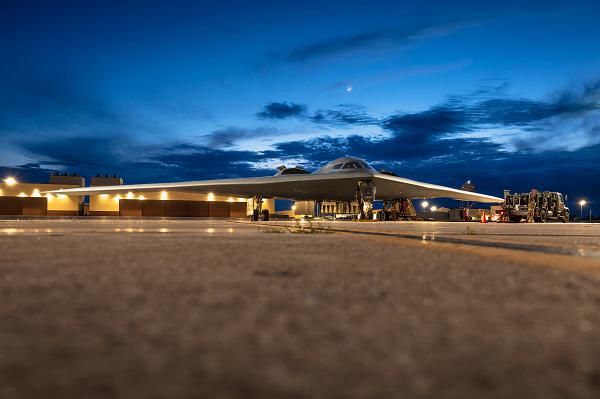
Whiteman Air Force Base, Missouri. (May 28, 2025): It is recommended that every driver shut off their engine when refueling at their local gas station. The Air Force, however, does not follow this sage advice. In this photo by Staff Sergeant Joshua Hastings, Airmen assigned to the 509th Logistics Readiness Squadron conduct hot-pit refueling for a B-2 Spirit bomber. “Hot pit” refueling is the practice of pumping gas into an aircraft immediately after landing while keeping the engines running. While this greatly reduces aircraft turnaround time, it is also an extremely dangerous practice.
First, the benefits of hot pit refueling. In a traditional landing, pilots turn off their engines to refuel and for general maintenance. This process can take up to six hours before an aircraft can return to service. Using hot pit refueling can reduce time on the ground to just 60 minutes, a sixty-six percent savings. The goal is to give U.S. aircraft the ability to get back in the air faster for more sorties and greater combat power.
Now for the dangerous part. Hot pit refueling presents several significant dangers, mainly due to the potential for fire and explosions. These dangers include static electricity ignition, sparks from equipment, and the risk of uncontrolled fuel flow, especially when dealing with highly flammable fuels.
As fuel flows through hoses, static electricity builds up and could ignite the fuel.
Also, leaks or malfunctions in the fuel system can result in “uncontrolled” fuel flow that creates a fire hazard. Finally, crew members can be exposed to heat, fumes, and exhaust blasts working so close to extremely hot engines.
While dangerous, hot pit refueling is vital to the Air Force’s ability to get aircraft back into the fight.


